Dane Jorgensen, lead keeper of the Birmingham Zoo’s Primate Department, never expected one inquisitive and playful giant otter to come along and change the trajectory of his career. But that is exactly what Karina the giant otter did, changing the game not only for Dane, but for other animal species in the Birmingham Zoo — and beyond.


“I love the way that our relationship came to be,” says Dane, primary caretaker and trainer of the giant otter Karina and her sister Lara. The giant otters came to the zoo from Miami three years ago at the ages of 2 and 3. Dane recalls the two arriving on a truck around midnight and his early days of getting to know them. “I was there when she arrived, and I’ve been with her almost every day since,” says Dane. “Karina and I just kind of clicked.” Dane says it is important to establish a relationship with the animals outside of food, so he’d go into the exhibit to simply hang out and get to know the otters. “Karina would lay in the corner, and I’d sit beside her and toss a pebble toward her, and she’d nuzzle it back to me. It wasn’t training in a conventional way; we just had this little game between us that had nothing to do with food. Then, I put it under stimulus control with cues to tell her to do it and then reward her for doing it.”
Dane immediately took note of Karina’s openness, curiosity and willingness to engage. “The dominant animals like her sister Lara are pretty straightforward and food-motivated. Karina had this little spark and looked at things differently,” says Dane. “She kind of wanted to figure us out. When we enter the exhibit, even without food, Karina always runs over to greet us. Also, when you give them enrichment items to motivate them, Karina tries to figure everything out about the item, investigating it and going through all the motions, because she enjoys exploring and playing with new things, and I love that about Karina.”


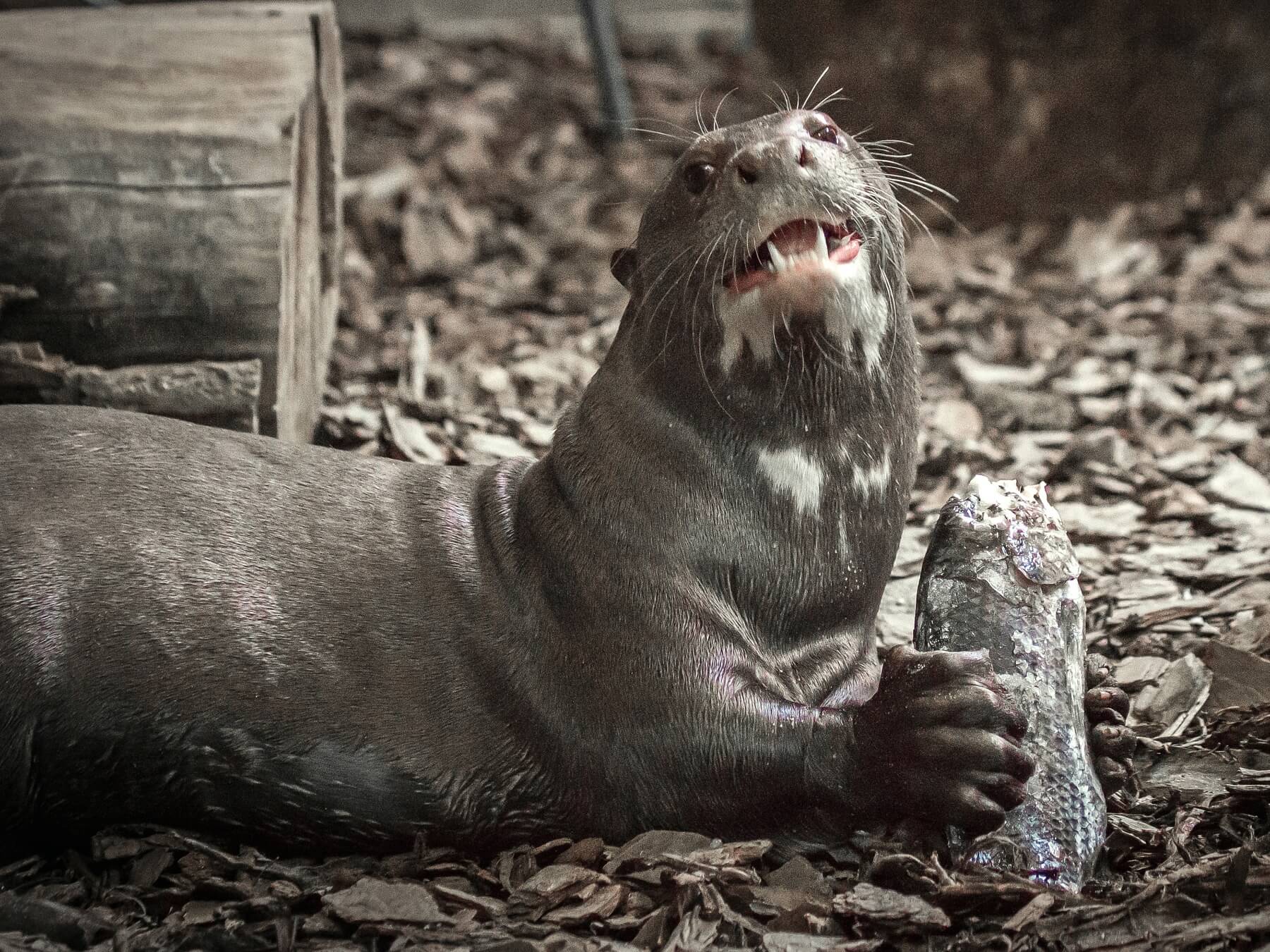
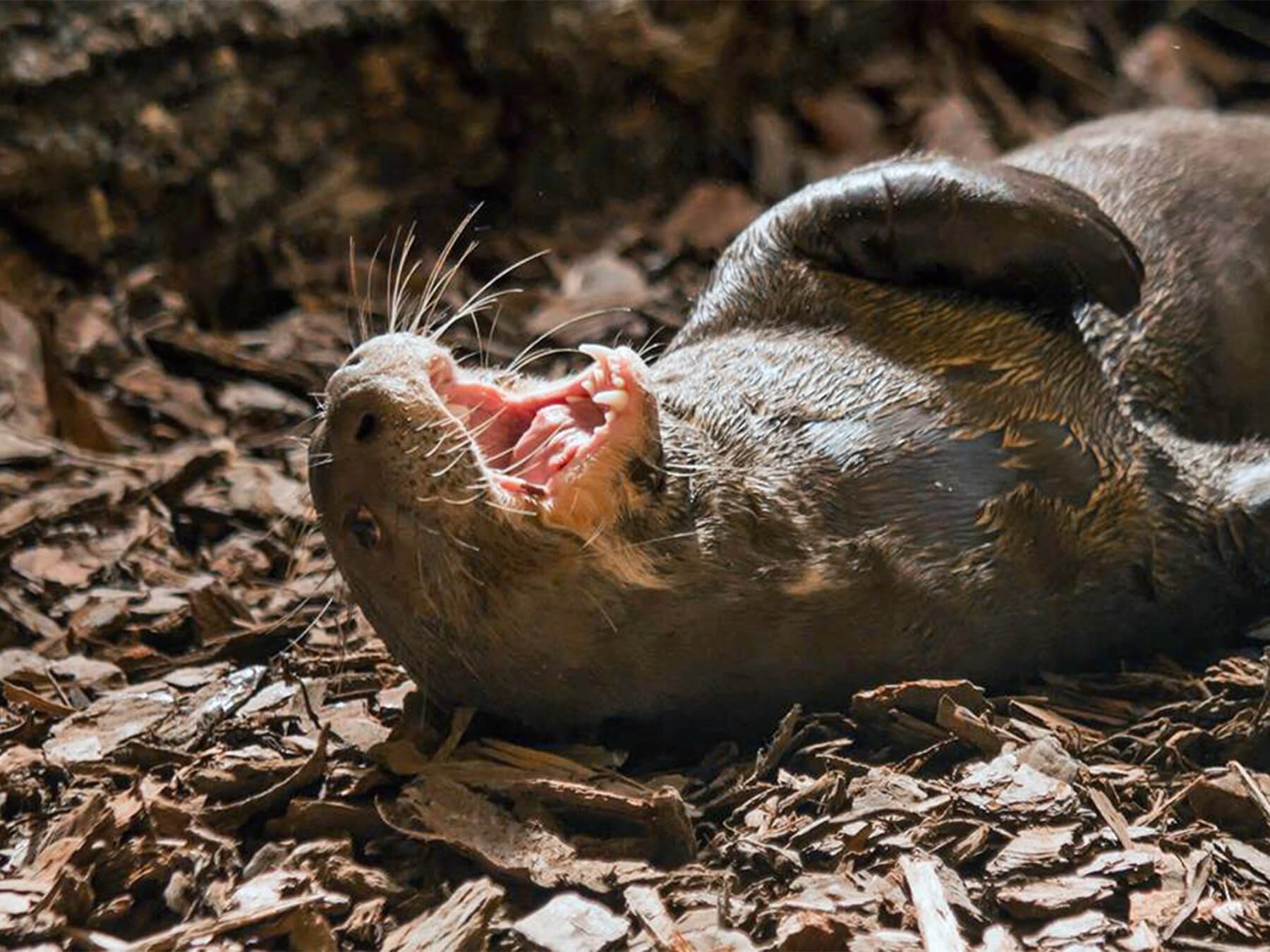
Using a whistle, small treats, repeated encouragement with the word “good,” as well as quick, loving nuzzles on the giant otter’s nose, Dane and Karina can now perform about 70 different behaviors. If there is such a thing as an animal being a people-pleasing perfectionist, Karina is it. At the first toot of the whistle, she drops down like a well-trained soldier, belly on the ground with her adorably short arms at her side and her eye-of-the-tiger gaze trained on Dane. She exudes an animalistic joy in performing her tasks, including running through tubes, playing varying degrees of fetch, pushing items in the water and even dunking a ball through a miniature basketball hoop.
The same joy is reflected in Dane’s grin as he interacts with this eager otter. “I don’t know what it is. Her and I just have this connection,” says Dane. “She is quirky and interested in everything around her. She makes me love working with her. I just understand her. I get her.”
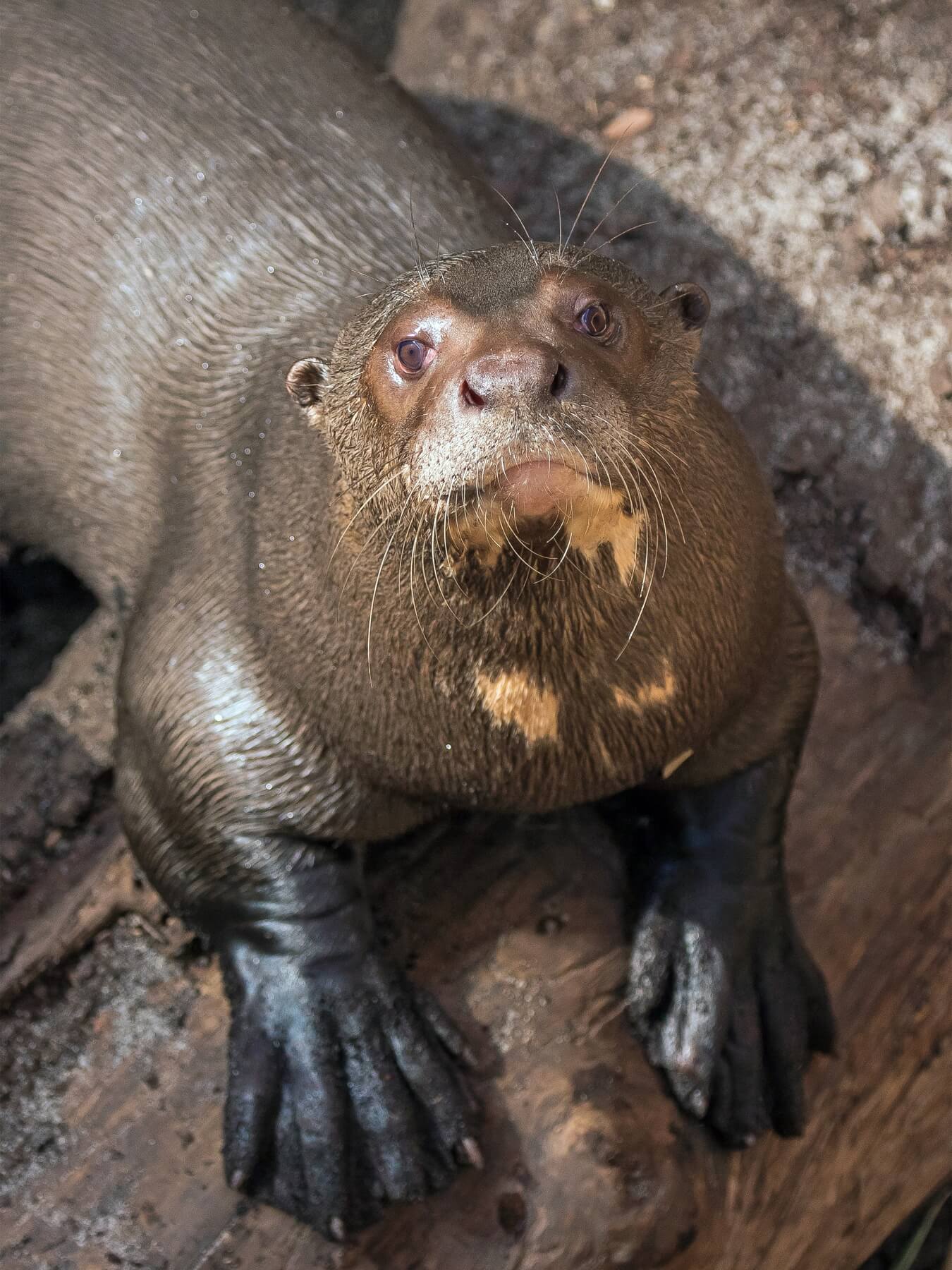
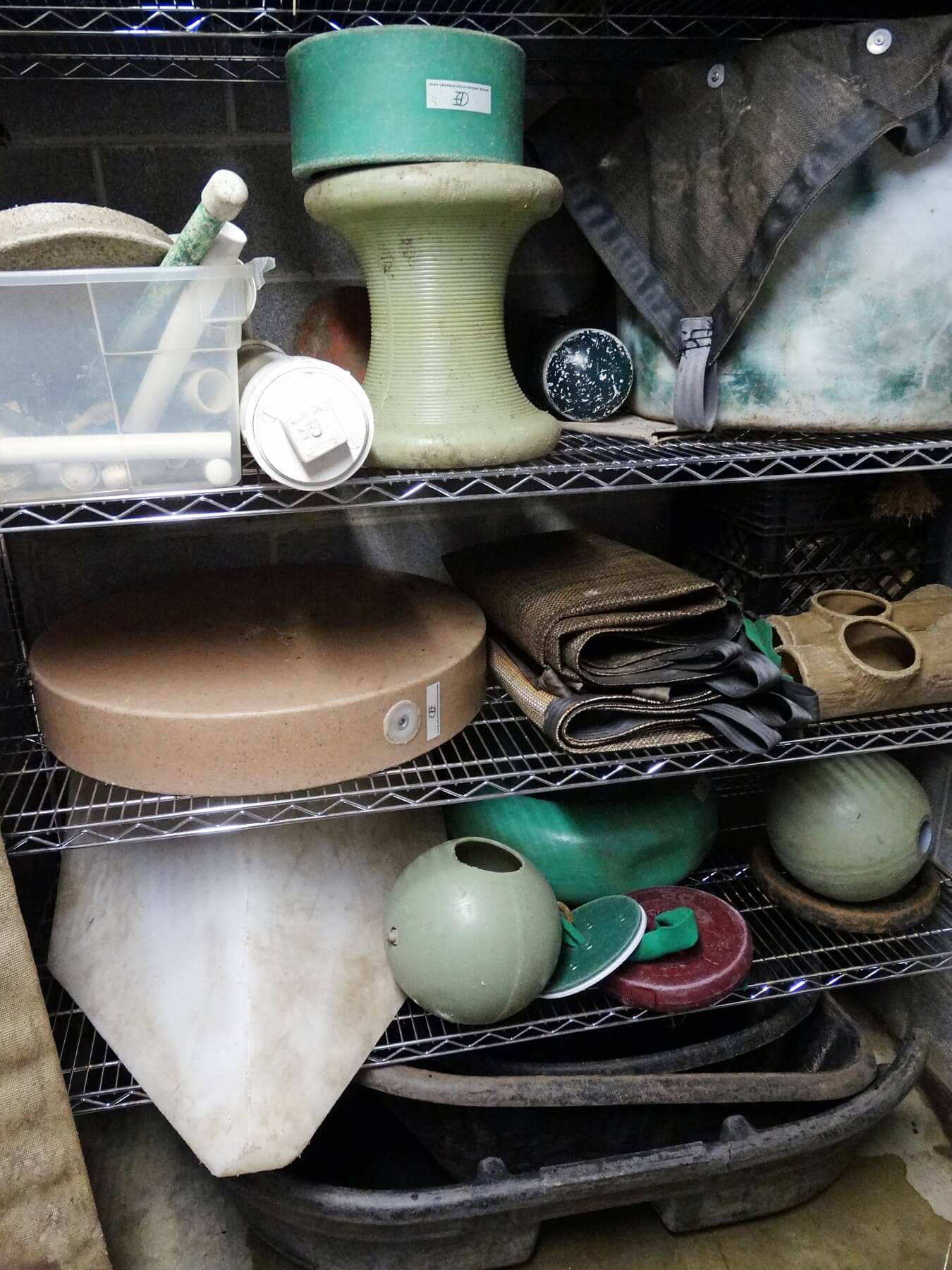
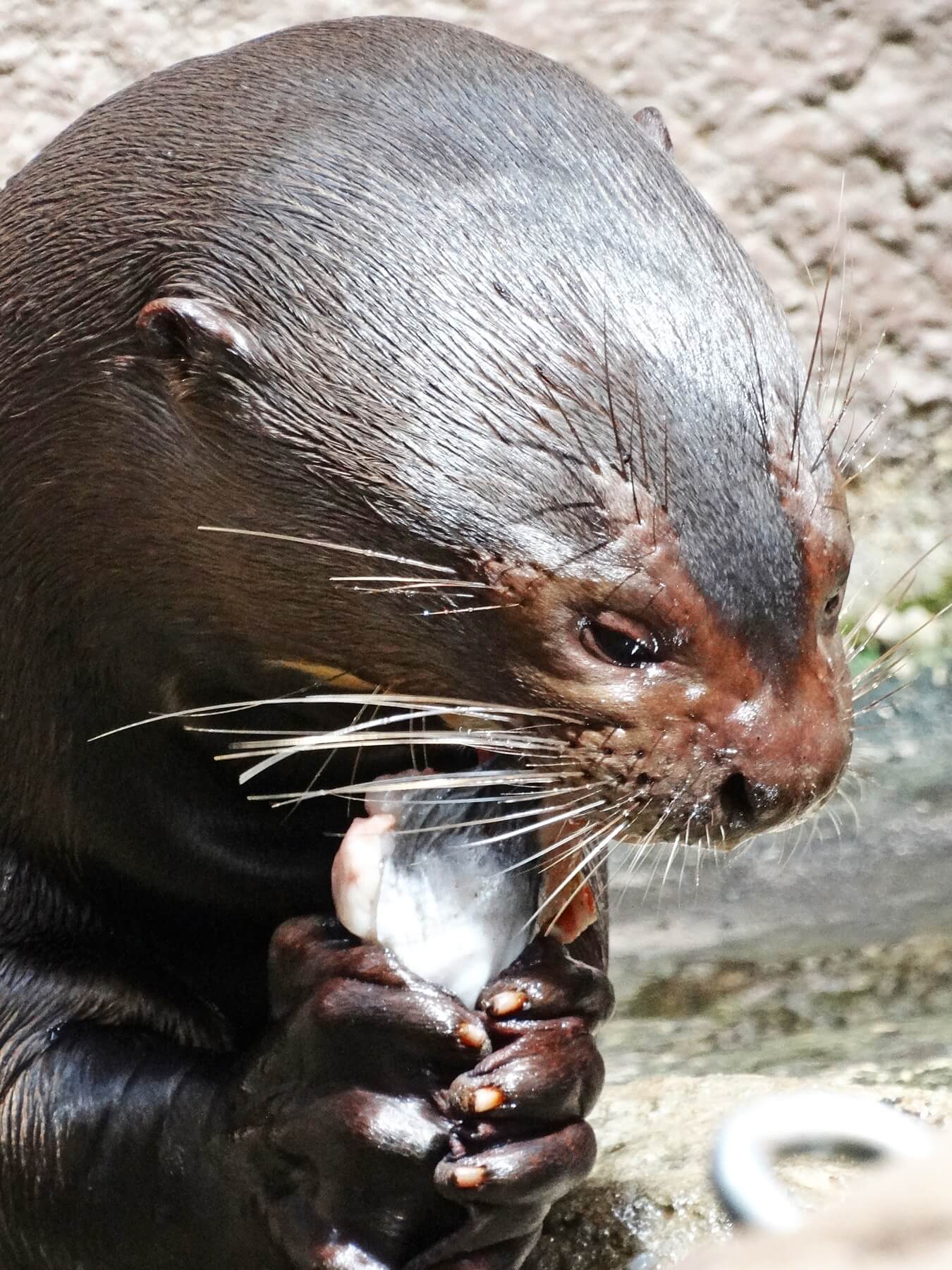


Dane explains that doing these tasks mimics hunting in the wild, which is usually followed by healthy natural behaviors, such as swimming, digging and interacting with each other, which Karina and Lara both do in their zoo habitat since Dane began working with them. “I can see the difference this training has had, compared to when they first came here,” says Dane. “The biggest thing is that the training gives the animals confidence. And that’s a big thing in zoos, because you need them to be able to cope with stresses. She is very confident when I am in there, because we have been through some challenges together.”
A few months ago, Karina hurt her wrist and was limping. The keepers were trying to figure out if it was serious or if they should let it work itself out. Dane was able to train Karina to put her hand out, so the technician could X-ray the injury. He’s also been able to train her to let him brush her teeth and to submit to a voluntary heart ultrasound by a veterinary technician. “We’ve been through a lot of situations where we put her in what normally would be a stressful situation, and we work through things. And she can handle it because she trusts me enough,” says Dane. “She is reassured by my presence, and I can communicate with her and let her know that everything is OK. We’ve done things like injection training and blood draw, which is not very common. Because of this work with Karina, we’ve been able to translate these behaviors across to other species. We did blood draws on the male monkey. I would have never felt confident enough to pursue that before. But because of her, I am trying to do the same core things I do here across all of the different species. She set the stage for what I want to do with any animal I work with for the rest of my career.”



Dane and Karina have accomplished things that no other zoos have with their giant otters. Not only has Dane given this curious and lovable giant otter great confidence, but she has been the biggest game-changer in his career and confidence as well. Being that this dynamic duo is setting the standard for giant otter health and behavioral care, Dane will be an instructor at the next Otter Keeper Workshop in Buffalo, New York, alongside other well-respected national otter representatives. A member of the Otter Specialist Group, Dane continues to share his training practices with several institutions, workshops and conferences and was recently awarded a conservation grant that allowed him to research wild otters in Guyana. This beautiful little local relationship between an otter and her keeper is reaching well beyond the gates of the Birmingham Zoo, as Dane shares his groundbreaking work — and the fact that it can translate to benefit other species — with diverse groups of animal specialists from cities all over the United States.
“Everyone likes being successful at their job. That’s the great thing. I look forward to seeing her and working with her. But, she has made me look at things differently. From the training standpoint, I view my job and my role differently. I view it more as a responsibility than as just a love of working with animals,” explains Dane. “I feel responsible for her health and well-being. I really try to get her to help herself, to participate in the medical stuff, so she can take care of herself. And that makes me feel better about my work. She’s been a big, big impact on my life. I’m very grateful for her.”
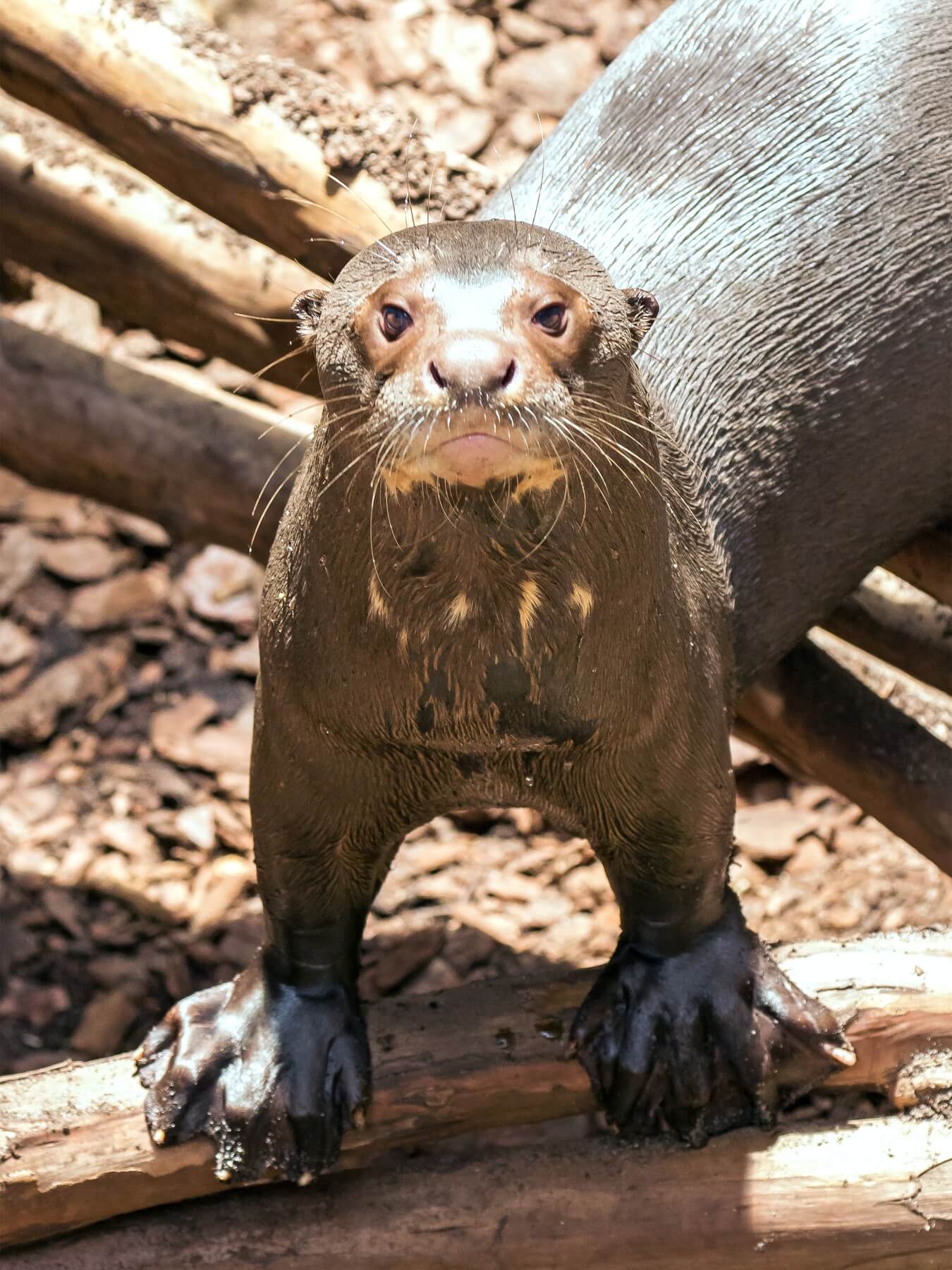
When you’re exploring the Birmingham Zoo, visit Karina in the primate building. And as you watch her swimming, digging and cuddling with her sister — or if you’re lucky enough to catch her training with Dane — it’s impossible not to be inspired by the thought that this one inquisitive and trusting otter in Birmingham has not only changed her caretaker’s life, but she’s breaking new ground for other animal species far beyond Alabama.
Thank you to architect and wildlife artist Everett Hatcher for the awesome photos of Karina and Dane at the Birmingham Zoo!
The Birmingham Zoo is located at 2630 Cahaba Road in Mountain Brook. Hours are 9 a.m to 5 p.m., Monday through Sunday. For more information, call (205) 879-0409 or visit birminghamzoo.com.
**********
Want the best of everything local? Download our SB App. It’s FREE!



















